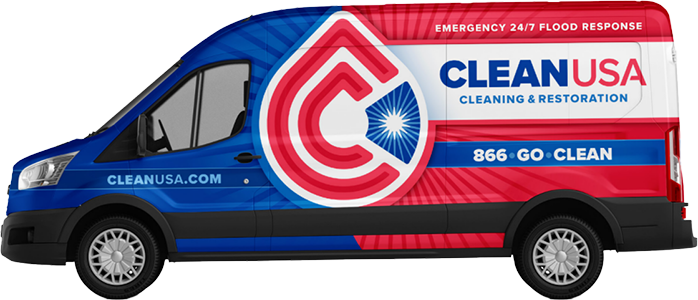Did you know that about 14% of homeowners deal with water in their garages because of heavy rain? This problem is common and can cause a lot of damage if not fixed quickly. Plumbing leaks are a big cause of water damage, making up almost 30% of cases. Roof and exterior leaks add another 20% to the problem.
Garages are especially at risk. It’s important to act fast because mold can start growing in just 24 to 48 hours after water damage.
Fixing water damage in a garage is a detailed process. It involves finding out how bad the damage is, fixing any structural problems, and stopping it from happening again. By understanding how to fix water damage, you can protect your garage from further damage, mold, and high repair costs.
Key Takeaways
- Approximately 14% of homeowners face water intrusion in their garages due to heavy rainfall.
- Water damage can originate from plumbing leaks (30%) and roof/exterior leaks (20%).
- Mold can begin to grow within 24 to 48 hours of water exposure.
- Repairing water damage can cost between $1,500 and $7,500, depending on severity.
- Using a commercial dehumidifier can reduce humidity levels by up to 50% in a single day.
- Replacing weatherstripping on garage doors can prevent up to 90% of water intrusion issues.
Identifying the Signs of Water Damage in Your Garage
Spotting water damage in your garage early is key to avoid big repairs. About 14% of homeowners face water damage in their garages each year. This is often due to moisture buildup. Catching it early can save you from spending $2,500 to $5,000 on repairs.
Here are some signs to watch out for:
- Discoloration on Walls or Ceilings: Look for yellowish or brown spots, which signify seepage.
- Musty Odor: A persistent musty smell usually indicates the presence of mold or mildew, which can start growing within 24-48 hours of dampness.
- Rust on Tools or Door Components: Moisture can cause metal to rust faster, leading to equipment degradation.
- Erosion or Cracking of Concrete Floors: Water infiltration can erode concrete, increasing crack severity by 50% if not quickly addressed.
Spotting these signs early helps you act fast to prevent more damage. Water damage is a big issue, with nearly 50% of home insurance claims being for water damage. Checking your garage regularly, especially after rain or snow, helps catch problems early.
Up to 60% of garages face water issues. To prevent this, keeping humidity low with good ventilation is crucial. Knowing the signs and acting quickly can save you money and keep your garage in good shape. Using systems like sump pumps can also help reduce damage risk by about 60%.
Don’t forget the importance of regular maintenance. Water damage is a major cause of structural failures in homes. Sealing cracks and gaps can reduce water entry by 70%. Keeping your garage door weatherstripped can also help block water by up to 75%.
Common Causes of Water Damage in Garages
Garages are often at risk for water damage from several sources. Leaking roofs are a major cause. Roof leaks can lead to big problems, especially if gutters are clogged and water spills over into the garage. Also, old concrete floors can crack, making them more likely to let water in.
Another big factor is faulty plumbing. About 25% of water damage in garages comes from hidden leaks. These leaks can go unnoticed for a long time, causing a lot of damage. Appliances like water heaters and washing machines can also leak, adding up to 15% of the cases.
Garage doors and windows that aren’t sealed well are another problem. Around 30% of water issues come from damaged door seals. If the driveway slopes towards the garage, water can easily get in through the doors.
Soil slope issues also play a big role. Garages at the bottom of slopes are more likely to get water damage. Heavy rain can cause a lot of water to gather. Cracks in foundations or walls make it even worse by letting water in.
Other common causes include clogged gutters and poor drainage. It’s a good idea to check drainage systems once or twice a year to avoid clogs. Installing trench drains or flood vents can help in areas prone to flooding.
To prevent water damage, regular maintenance is key. Make sure garage doors and windows are sealed well. Check the roof and plumbing often. Improve drainage systems to reduce the risk of water damage. Using waterproof storage and installing overhead shelving can also protect your belongings. Fixing these problems quickly is important for garage flood damage repair and prevention.
Steps to Fix Water Damage in a Garage
Fixing water damage in your garage needs a careful plan. If you don’t handle it right, it can cause more harm. This includes damage to the structure and mold, which can harm your health.
- Remove all water-damaged items: Begin by taking out any items that got wet. Put them somewhere dry to check later.
- Dry out the area: Use fans or dehumidifiers to dry the garage well. It’s key to get rid of standing water fast to stop mold. Mold can start growing in just 24 to 48 hours.
- Conduct a thorough assessment: Look closely at the damage. Check for weak walls, cracks in the foundation, and mold. Garages with concrete floors can soak up a lot of water, causing big problems.
- Repair or replace damaged structures: Fix or replace damaged parts with materials that won’t get damaged by water. Be extra careful if the damage is from Grey or Black Water. These types are more dangerous to your health.
- Upgrade ventilation: Better ventilation helps keep moisture levels low. This reduces mold risk. Think about adding dehumidifiers or improving airflow to stop moisture buildup.
- Seal entry points: Check and seal any spots where water might get in. Look at gaps around doors and windows. Most water damage comes from bad roofs and plumbing, so check these often.
- Regular upkeep: Check your garage’s structure, roof, and plumbing every three months. Do this more often during rainy seasons. Fixing problems early can save you a lot of money in the long run.
Using these steps to fix garage water damage helps solve current problems and prevents future ones. By following these steps, homeowners can fix water damage well and keep their garage safe and useful.
Conclusion
Managing water damage in a garage starts with being proactive and acting fast. It’s key to spot the signs early, know why it happens, and fix it well. Keeping up with maintenance and using preventive steps can really help avoid future problems.
If the damage is big, getting help from experts is a smart move. They can make sure your garage is safe and sound again. This helps keep your property’s value and safety in check.
Prevention is crucial, as shown by the numbers. Catching water damage early can stop mold from growing and save a lot of money. Since many homeowners face water damage, it’s smart to check your home often and have good drainage.
Small steps like using waterproof coatings and weather stripping can block most moisture. This means less water gets into your garage.
Fixing water damage in garages can be done with simple, affordable steps. Installing drains, vents, and pumps can handle a lot of water. This cuts down flooding and water buildup by 75%.
Also, keeping your HVAC system in check and sealing concrete floors can protect your garage for a long time. By taking these steps and watching for water damage signs, you can keep your garage safe from water damage’s costly and messy effects.




